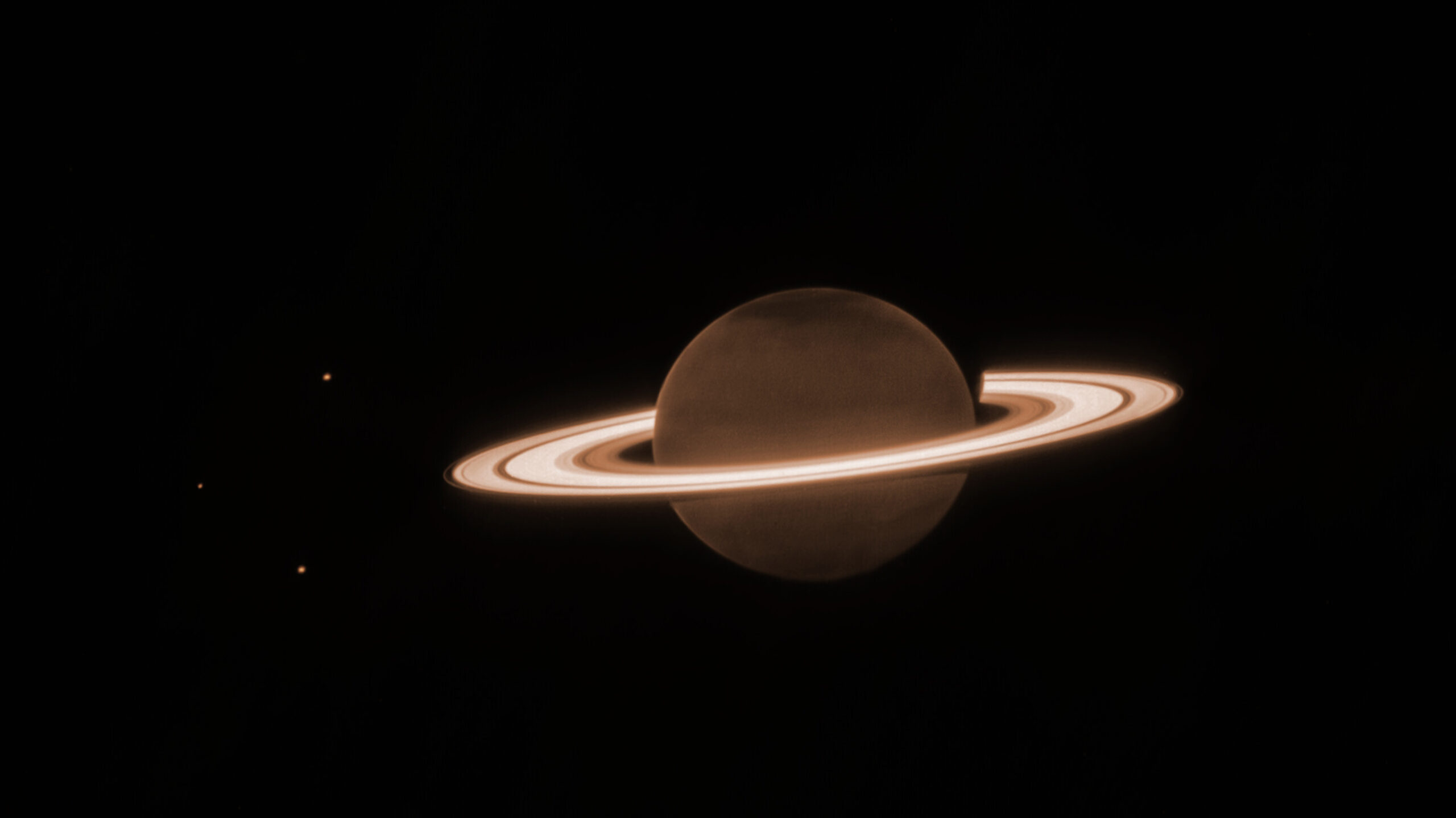The large telescope has completed its “tour of the planets” of our Solar System, photographing Saturn. And the result is visually impressive! If the gaseous planet absorbs solar infrared radiation, this is not the case for its rings, which shine intensely. A feast for the eyes !
The observation will also serve for the characterization of the moons of Saturn.
A growing collection
After Mars, Jupiter, Uranus and Neptune, the James Webb telescope has (finally) taken beautiful images of Saturn! The photography was missing from the collection, especially since a few weeks ago, he had captured geysers on Enceladus (which precisely revolves around the beauty with the rings), so we knew that it was only a question of time.
With this shot, the large telescope of NASA, ESA and Canada has completed the “tour of the planets” that it can photograph in our Solar System. Yes, as he cannot turn towards the Sun, the Earth, Venus and Mercury will remain forever behind him. But back to Saturn.
Shiny rings
The choice of colors is that of the scientists of the STScl laboratory (Space Telescope Science Institute) which processes the images from the James Webb telescope, which, it should be remembered, are in the infrared range: what appears on the image is not the visible area. On the other hand, the brightness of the rings compared to the atmosphere of the gas giant is quite normal. The high concentration of methane in Saturn’s clouds absorbs solar radiation much more than the water ice that makes up its rings, which reflects them as much as possible… We therefore have the impression that they shine.
Pretty, of course, but not only…
These images are not just pretty, but they are part of a research program, which evaluates the JWST’s ability to detect, in long exposures, the smallest moons of Saturn. It must be said that with 146 official moons, it’s a real challenge! Their orbits are not all very well documented and characterized, so if the James Webb Telescope gets there, regular observations may help to find out more.
Despite everything, with its exceptional performance, the large satellite and its 6.5 m diameter mirror already has so much to do. NASA is however looking for as much information as possible before its Dragonfly mission which will target Titan and which will leave next year.
Another interest for the researchers, these remote and infrared photos also provide information on seasonal differences on Saturn, whose northern hemisphere is currently in climatic summer, and which, theoretically, should have been warmer than what the photos show. So there are still mechanisms to understand about the gas giants!
Source : Ars-Technica

5